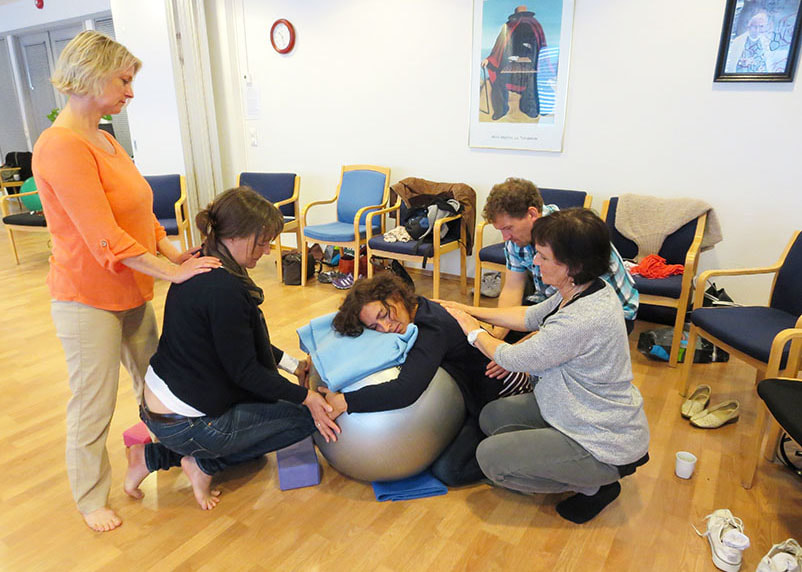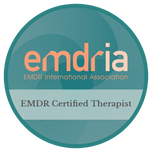Catherine M. Blake, MA, LPC, Certified Therapist in EMDR
Somatic Therapy (Sensorimotor Psychotherapy)The body doesn’t lie; it holds the key to unlocking the subconscious. Most people can feel resonance in the sensation of energy flowing through their own body. A positive resonance, connection or rapport, usually creates expansion and relaxation. A negative resonance, or dissonance, usually leads to subconscious guarding, holding , or tension. All movements – body language, gestures, and innate unconscious responses to another person- are a combination of positive and negative energy or resonance.
My specialty is moving in synchrony with people, matching or complementing your patterns of movement, breathing, speech, thought and vibration. This process creates deep bonds or connections between people (Foster, 2004, p 85). I am highly sensitive and my body signals and intuition inform me about your level of disturbance on a particular issue. What Is Somatic Therapy?Soma is a Greek word meaning body. Somatic therapy uses the body as an essential participant in assessment and treatment. Mind and body are equal; they are both integrative parts of the whole person (United States Association for Body Psychotherapy, 2005).
The theory behind somatic therapy is that trauma disrupts the balance of the autonomic nervous system. Trauma symptoms are the results of this imbalance. Somatic therapy techniques work with the body directly rather than mind to heal the wounds of trauma. Five principles of somatic therapy include: 1) Client and therapist must be in the present moment; 2) the purest form of the Self resides in the body; 3) All our experiences are stored in our physical body, 4) The body is wise and knows how to heal itself, and 5) Working directly with activation/energy can allow us to change behavior patterns. How Is Somatic Therapy Similar And Different From Talk Therapy?Talk therapy and somatic therapy both deal with problems of living. They include trauma healing, life transitions, relationship challenges, etc. In talk therapy, the unconscious may be accessed through other avenues (i.e. dreams, thoughts) , is not considered vital to healing (“change your thoughts and you can change your behavior”), and is not pursued through the body directly and with intention.
Somatic therapists add focusing on sensation, movement, and the 5 senses in addition to thoughts and emotions. Touch is used sparingly (talk therapy refrains from touch) for specific purposes (i.e. to bring one’s awareness to a specific body part), with the client’s permission and preparation. Mind and body are equal; they are both integrative parts of the whole person in somatic therapy (United States Association for Body Psychotherapy, 2005). How Is Somatic Therapy Different From Massage Therapy?Somatic therapy practitioners heal through minimal physical contact. Touch is only used when required for healing. Massage therapy is always done with “hands-on” contact. Massage therapy focuses on relief and release of physical issues going directly through the body (emotional issues can heal but incidentally). Somatic therapy concentrates on relief and release of emotional AND physical issues through the body, spirit, cognitions, and emotions.
|
How Does Somatic Therapy Work?No one knows for sure. We do know that the brain is very complex, this is realized now way more than what was previously thought. Patterns are held in the brain and body from our childhood and other past events, but the brain and body have neuroplasticity. Imagine snow on a hill in winter. The first time you ski down this virgin hill, you can take any route you want. If you keep skiing down the same hill, there are tracks/ruts that are hard to get out of to change your behavior (webinar with Norman Doige on 2/21/2013). Do you want to deepen a pattern or find a new one? Through adding awareness to your habits and body patterns, I can help you add different “routes” on your life hill that work better for your current life.
Changing thoughts/cognitions alone is not enough when you have a deep trail on the snow hill. Working through your body to integrate “shadow” parts and celebrate the positive aspects can help you choose new, more adaptive behaviors in your life. Our body is very wise; our cells are millions of years old and have an intuitive “knowing.” I can teach you how to tune in to that wisdom. Most of us have an external locus of control and are trying to please others around us. Tuning in to your body’s wisdom can free you to know what is truly “right” for you – not based on other’s wishes and influences. How Long Does Somatic Therapy Take?This depends on what your goal is, how in touch with your body you are, and how much work you have already done. The bond or attachment needs to happen first. Developing resources (in the body in addition to other kinds) is the next step. Diving into your issues can be a short process (e.g. learning to manage overwhelm) or take many sessions (ie. changing your relationship or bonding style).
What Does A Somatic Therapy Session Look Like?A typical session might include a person’s consciously scanning his/her body sensations; expressing emotion through movement (like spinning or pushing against a pillow); discovering how grounding and breathing help calm tension; and/or exploring the energy/intuition a person feels toward a family member.
Is Somatic Therapy Right For You?These problems are particularly well-suited to somatic therapy work with Cathy:
Also, If you would like to improve your:
For More Informationhttp://www.usabp.org/ United States Association for Body Psychotherapy
http://www.sensorimotorpsychotherapy.org Sensorimotor Psychotherapy Institute http://www.emdria.org EMDR International Association |



